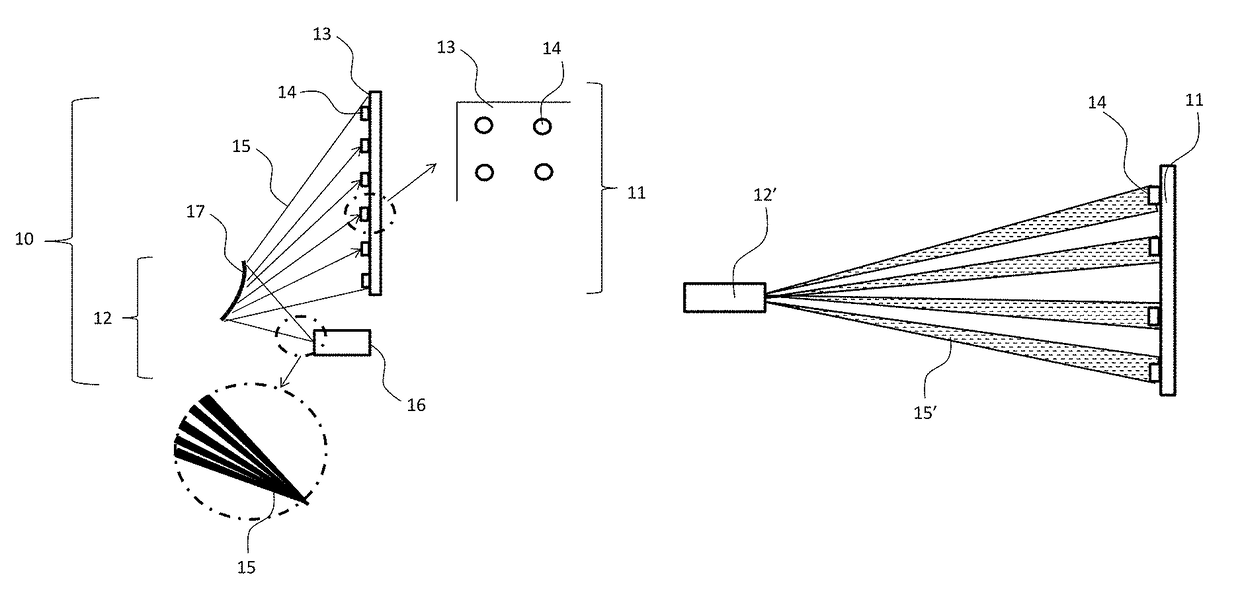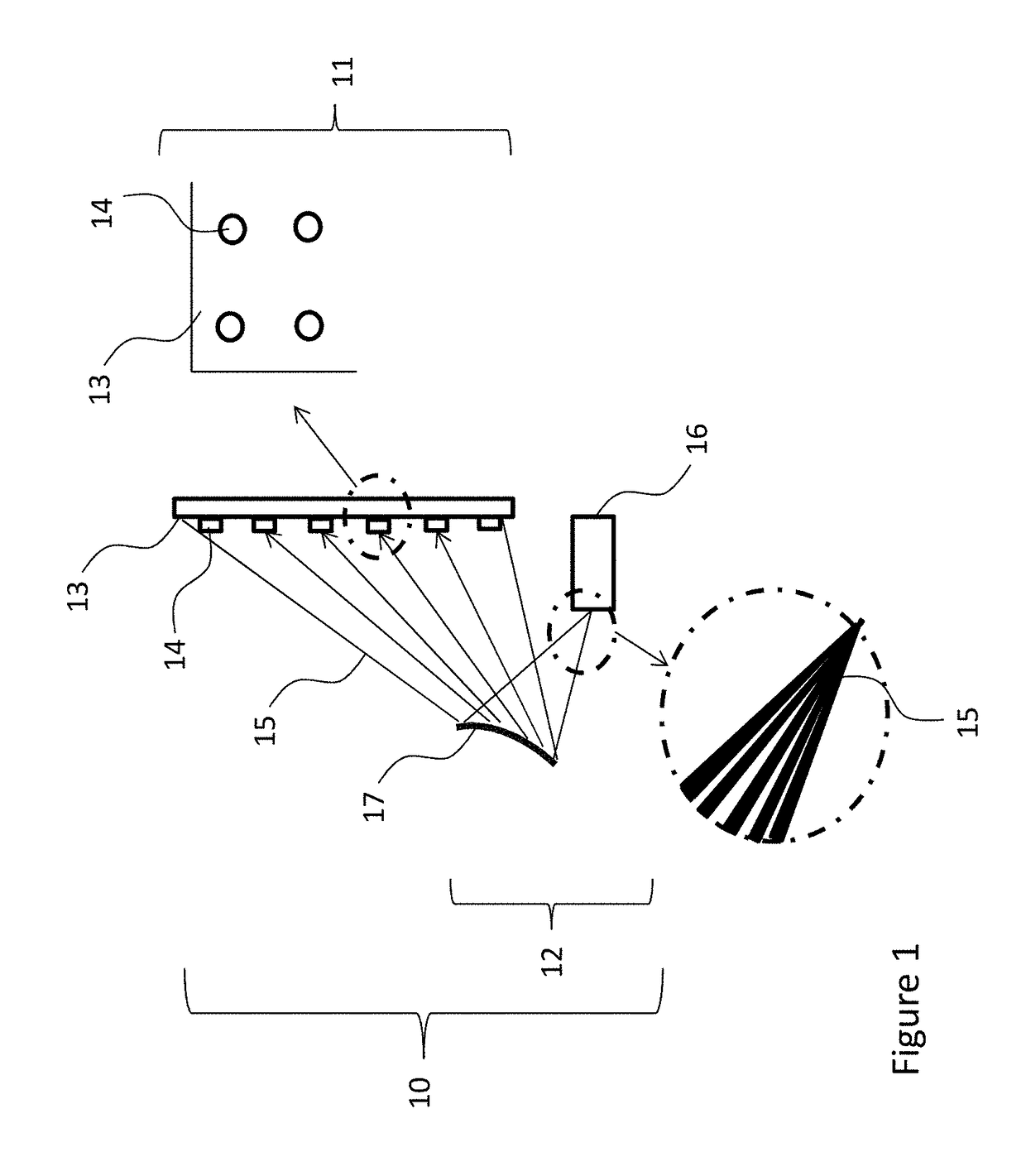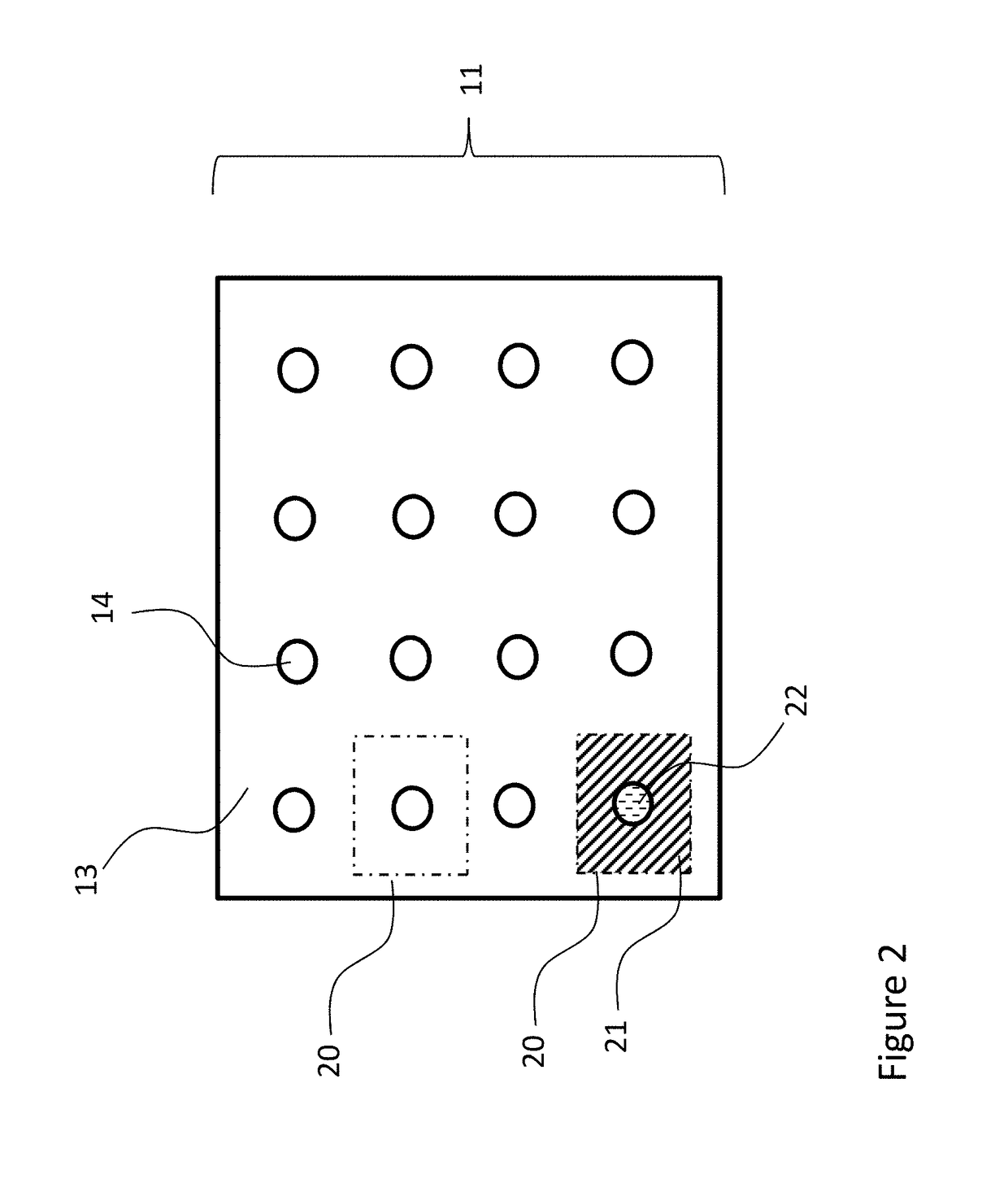Transparent display including a screen with patterned light deflective elements
a technology of light deflective elements and transparent displays, applied in the field of transparent displays, can solve the problems of limit reliability and lifetime, and achieve the effects of limiting reliability and lifetime, large size, and easy scaling
- Summary
- Abstract
- Description
- Claims
- Application Information
AI Technical Summary
Benefits of technology
Problems solved by technology
Method used
Image
Examples
Embodiment Construction
[0099]An aspect of the invention is a transparent display device. In exemplary embodiments, the display device includes at least one screen that has a plurality of light deflecting elements that are separated by transparent areas, and a projector device. The projector device is configured to direct light onto the light deflecting elements and not onto the transparent areas.
[0100]An exemplary embodiment of the present invention is described in connection with the depiction in FIG. 1. This embodiment constitutes a transparent display system 10 and includes a screen 11 and projector 12. The screen 11 has a clear transparent base material 13 that can be plastic (Poly (Methyl Methacrylate) [PMMA], polycarbonate, or like material) or glass. On the screen there exists a number of optical light deflecting elements 14 that are positioned with a spacing between each element. The projector 12 has a projection system 16 and reflector 17 in an “ultra short throw” arrangement where the thickness ...
PUM
 Login to View More
Login to View More Abstract
Description
Claims
Application Information
 Login to View More
Login to View More - R&D
- Intellectual Property
- Life Sciences
- Materials
- Tech Scout
- Unparalleled Data Quality
- Higher Quality Content
- 60% Fewer Hallucinations
Browse by: Latest US Patents, China's latest patents, Technical Efficacy Thesaurus, Application Domain, Technology Topic, Popular Technical Reports.
© 2025 PatSnap. All rights reserved.Legal|Privacy policy|Modern Slavery Act Transparency Statement|Sitemap|About US| Contact US: help@patsnap.com



